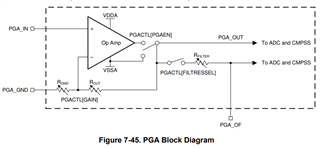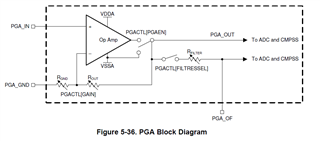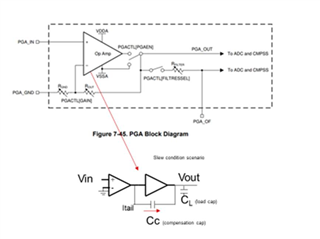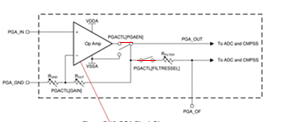Other Parts Discussed in Thread: TMS320F280049C, TMS320F280039C
Dear TI expert,
At my project, TI C2000 TMS320F280049C is used to control the digital power supply.
The output voltage will feedback into C2000 internal PGA through resistor divider, then go to the ADC, then to do dynamic control. If needed, to adjust the PWM duty to the digital power supply.
Currently TI TMS320F280049C is in shortage, thus you suggest us to use TMS320F280039C. However, inside TMS320F280039C, there is no PGA available, then it means we need to find a external op-amp as instead.
So do you have any suggested op-amp for us to replace the PGA inside TMS320F280049C?
Besides, we are also trying to find suitable op-amps by ourselves, however, we have some doubt regarding to some parameters of the PGA inside TMS320F280039C? Could you help give us your explanation?
1. Why slew rate is changing with gain change? as per my knowhow, slew rate should be somehow a fixed value.

2. Why the bandwidth is same for all gain setting(3,6,12,24)? Also, as per my understanding, the gain bandwidth product should be somehow a fixed value.

3. Below the gain error and offset error values is before your hardware trim or after your hardware trim?

Thanks for your time on this in advance!








